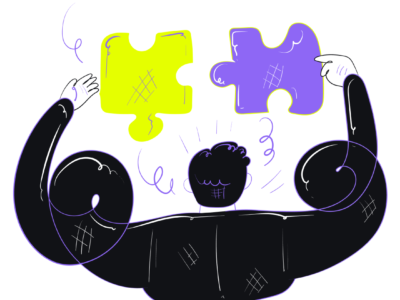Your eye is made up of many parts that have to work together to let you see clearly. If one of these parts gets irritated, it can hurt or cause discomfort.
Eye pain may feel like a gritty, aching, or stabbing sensation in or around your eye. It can also cause red, watery eyes and blurred vision.
1. Allergies
The outer layer of the eyeball (sclera) and the inner surface of the eyelids are protected by a delicate coating called conjunctiva. Irritation of this layer is the most common cause of eye pain, though pain in deeper structures may occur as a result of conditions like glaucoma or migraines.
Allergies can trigger symptoms that affect the outer lining of the eye, including redness and itching. This is because the body’s immune response to allergens — such as dust, animal dander, medications and pollen – results in the release of inflammatory chemicals that cause these symptoms. Many people find that home remedies and over-the-counter medications help relieve allergy symptoms, but for severe irritation and itchiness that do not respond to self-care steps and over-the-counter treatments, you should see your doctor to discuss prescription eye drops or oral antihistamines.
Another common cause of eye discomfort is pink eye, which is actually a type of conjunctivitis (inflammation of the clear membrane that covers the eyes). The inflammation causes the blood vessels in the conjunctiva to swell and make the part of your eye that’s usually white look red. Your eye may also have a yellow or greenish discharge. The good news is that this condition, unlike some forms of bacterial conjunctivitis, typically does not spread easily between people.
2. Glaucoma
The cornea is the outer layer that covers the front of the eyeball and the pupil. It’s a very sensitive part of the eye that can hurt from a wide range of issues, including injuries, diseases and allergies. In addition, the cornea can be damaged by increased pressure inside the eye, a condition known as glaucoma.
Glaucoma can affect people of any age, but it’s most common among adults over 40. When glaucoma is diagnosed and treated early, it can prevent blindness from eye damage. The most common form of glaucoma is open-angle glaucoma, which develops gradually over months or years. This type of glaucoma usually doesn’t cause pain, but it can lead to vision loss.
Another type of glaucoma is called angle-closure glaucoma, which can occur suddenly (acute). This occurs when the eye’s drainage canals become blocked, preventing aqueous fluid from leaving the eye and causing eye pressure to rise. If you’re experiencing this type of glaucoma, it’s an emergency and you should seek medical attention immediately.
If you or your parents suffer from glaucoma, it’s important to follow your doctor’s treatment plan exactly. Your doctor may prescribe medicated eye drops to reduce intraocular pressure. You might also be given oral medications to help lower the pressure in your eye, like carbonic anhydrase inhibitors. Alternatively, your doctor may recommend minimally invasive glaucoma surgery (MIGS), which involves inserting a tiny tube into the drainage angle of the eye to create a permanent opening for aqueous fluid to leave the eye.
Antibiotic eye drops can cure bacterial conjunctivitis, and over-the-counter allergy medicines such as Zyrtec or Claritin can ease the itchiness and redness of allergic reactions. Cold or warm compresses can be soothing to the eyes, and you can try flushing out your eyes with cool water if you think there is an object stuck in them.
3. Sinus Infections
Infections in the sinuses can cause pain, itching, tearing and runny nose. They can also cause a feeling of pressure behind the eye. The buildup of pressure can interfere with the blood flow to your eyes, causing blurred vision. If you experience symptoms like these, it is important to see your doctor.
Sinus infections are caused by the inflammation and swelling of the sinus cavities in the bones around your nasal passages. The infection can lead to a backup of mucus in the frontal and sphenoid sinuses that are near the eye. The buildup of mucus can put pressure on the cornea and create a blurred vision. You might also have a headache that feels like it is coming from your head.
You might be diagnosed with a sinus infection by your provider who will ask you questions about your symptoms. They will usually order a physical exam and take x-rays of your face to check for blockages. They may also use a fiberoptic scope (called nasal endoscopy or rhinoscopy) to view your sinuses and check for the presence of an inflammation.
In addition to treating the underlying problem, your doctor may prescribe medications that reduce inflammation and relieve your sinus pain. They will often recommend decongestants to promote drainage and decrease the buildup of pressure behind the eyes.
Your doctor might suggest that you inhale steam several times a day to help drain your sinuses. You can do this by sitting in a bathtub with the water running or by holding your nose over the sink and using a streaming device like a Neti pot or saline spray. This can help prevent a headache and ease the pressure on your eyes.
4. Eyelid Infections
Blepharitis is a common condition that causes redness and flakey or scaly crusting on the edges of your eyelids, often referred to as eye dandruff. Over time, it can lead to clogged glands, infections and even blindness. Fortunately, there are a number of ways to manage and treat this uncomfortable condition.
Infections of the conjunctiva (the transparent tissue that lines the inside of your eyes and covers the white part of your eyeball) can be caused by a variety of factors. Over-the-counter antihistamines can help with itchy, scratchy symptoms. Antibiotic eye drops, ointments or oral medications can treat the underlying infection. For serious infections, you may need to be given an antibiotic prescription by your doctor.
Several types of eyelid infections can cause pain and itching. One of the most common is a stye, which occurs when a pimple-like bump forms at the base of an eyelash follicle and becomes infected by bacteria (most commonly staphylococcus). Another type of eyelid infection is a chalazia, which doesn’t have pus in it but also looks like a painful lump on the inside of your eyelid.
In many cases, eyelid infections can be treated with warm compresses and over-the-counter eye drops or ointments to reduce inflammation. If the pain and irritation persist, you should see an ophthalmologist to get an exam and determine the underlying cause of the infection. For severe or untreated infections, you may be given prescription antibiotics in pill, ointment or drop form. In some cases, a slit-lamp exam may be needed to get a closer look at the irritant and the underlying damage. This can be done in an ophthalmology clinic or an emergency room.
5. Trauma
The eye has many sensitive structures that can become affected by irritation or injury. Pain can occur from the cornea (a crystal clear transparent tissue that covers the front of the eyeball and works with the lens to focus images onto the retina), the eyelid, or more deeply within the eye.
An injury to the eye can cause painful symptoms ranging from mild to severe. Some injuries are easily treatable while others require urgent medical care. It’s important to know the difference between a minor or major injury so that appropriate treatment can be started as quickly as possible.
A minor injury, such as an allergic reaction or a chemical burn to the eye, can usually be treated at home and doesn’t typically have any permanent damage. However, if the injury is severe and there are any signs of redness or warning signals such as blurred vision it is important to get seen by a doctor immediately.
Similarly, a condition known as a stye or chalazion is an infection within the oil gland in the eyelid that causes irritation and can be quite painful. The condition can also lead to increased pressure in the eyes causing blurred vision or even eye pain and watery eyes.
Trauma is a term that refers to any distressing event that may have a long-term impact on a person’s ability to function. A trauma can be caused by a one-time event such as a natural disaster or an accident or it could be the result of ongoing occurrences such as a chronic illness, repeated abuse or other stressful situations. Distressing events often trigger the amygdala in the brain to send an alarm signal to multiple body systems to prepare for defense. This response leads to short-term fear, anxiety and shock. In some cases, these negative feelings will dissipate as the crisis resolves and the memory of the experience fades but for others they can linger.













Comments